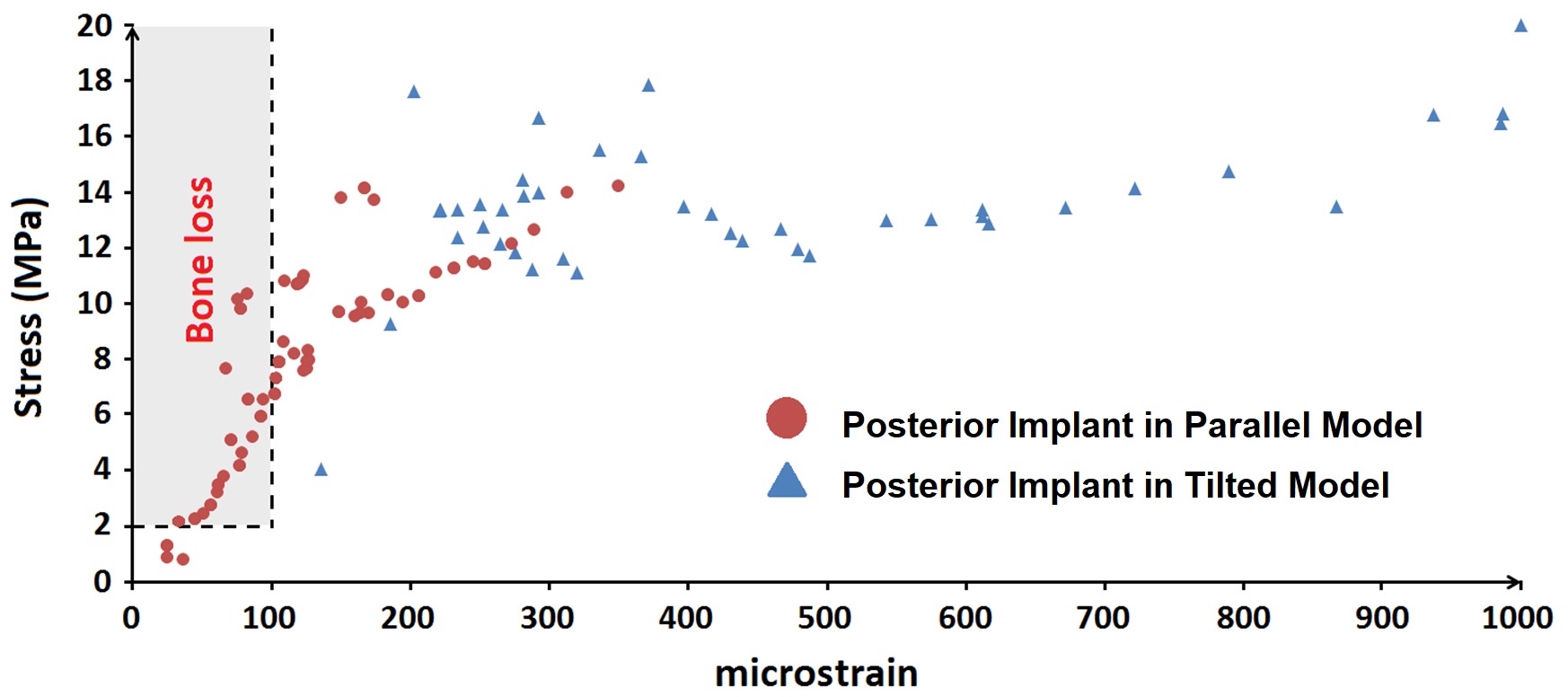IADR Abstract Archives
All-on-Four Treated Edentulous Mandible: A Simulation Study
Objectives: All-on-four treatment method is a promising approach for treatment of edentulous mandible. In this method, two different types of implantation have been chosen for embedding the posterior implants into mandible: parallel or titled implantation. However, their success rates are less defined and more controversial. This study aimed to investigate dynamic distribution of Von-Mises stress and the likelihood of bone loss or growth in osseous tissue adjacent to the dental implants in both parallel and titled models.
Methods: Computed topography (CT) images of cortical and trabecular bones were processed in Mimics software to create 3D geometry of mandible. In parallel model, the implants were embedded in the position of the second and forth tooth whereas in titled model, they were implanted in the position of the second and fifth tooth in which the implant embedded in the fifth tooth was rotated 30 degrees around Buccal-Lingual axis. The simulations were performed in Abaqus software, and the likelihood of bone loss or growth was investigated with the aid of Mechanostat model. A force along the horizontal rotational condylar axis with the maximum value of 10 N was applied onto the condyle. All of the interactions between each part with another one was defined as Tie and the mechanical properties of mandible as well as dental implants were considered elastic.
Results: More uniform stress distribution was observed in titled models. In both models, the maximum value of Von-Mises stress occurred in the neck region of posterior implant. This maximum value was greater in titled model versus parallel one. Moreover, the strain of the neck region of the posterior implant was greater in titled model. Despite the lower value of stress and strain in parallel approach, the Mechanostat model revealed that some of the elements are at risk of bone loss in this approach whereas the greater value of strain and stress in titled approach increased the likelihood of bone growth.
Conclusions: I can be concluded that the titled method of implantation can contribute to dental implant longevity as well as implantation efficiency in All-on-four treated edentulous mandible.
Methods: Computed topography (CT) images of cortical and trabecular bones were processed in Mimics software to create 3D geometry of mandible. In parallel model, the implants were embedded in the position of the second and forth tooth whereas in titled model, they were implanted in the position of the second and fifth tooth in which the implant embedded in the fifth tooth was rotated 30 degrees around Buccal-Lingual axis. The simulations were performed in Abaqus software, and the likelihood of bone loss or growth was investigated with the aid of Mechanostat model. A force along the horizontal rotational condylar axis with the maximum value of 10 N was applied onto the condyle. All of the interactions between each part with another one was defined as Tie and the mechanical properties of mandible as well as dental implants were considered elastic.
Results: More uniform stress distribution was observed in titled models. In both models, the maximum value of Von-Mises stress occurred in the neck region of posterior implant. This maximum value was greater in titled model versus parallel one. Moreover, the strain of the neck region of the posterior implant was greater in titled model. Despite the lower value of stress and strain in parallel approach, the Mechanostat model revealed that some of the elements are at risk of bone loss in this approach whereas the greater value of strain and stress in titled approach increased the likelihood of bone growth.
Conclusions: I can be concluded that the titled method of implantation can contribute to dental implant longevity as well as implantation efficiency in All-on-four treated edentulous mandible.


